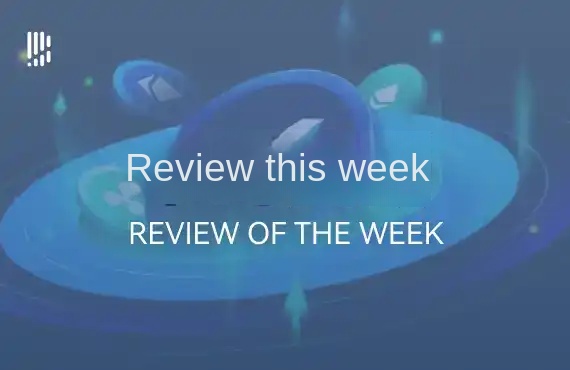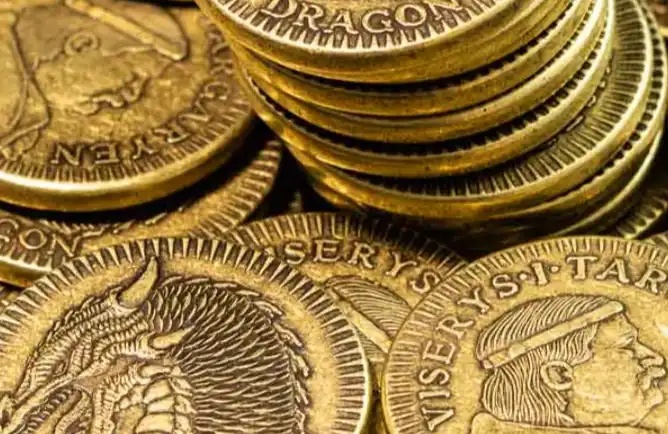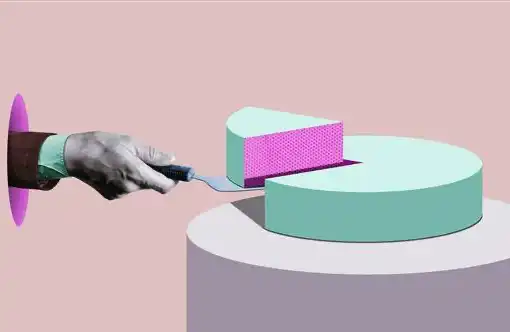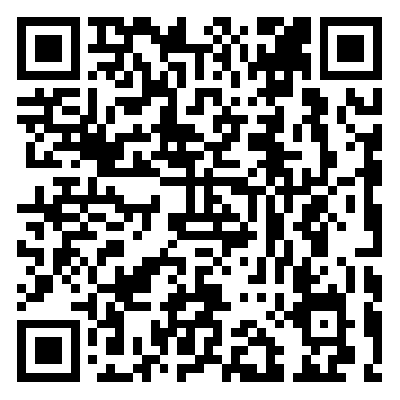Detailed explanation: Why are inscription tokens essentially semi-fungible tokens?
The essence of inscription tokens is SFT
Author: CaptainZ
Editor's note: Inscriptions are the first hot narrative of this round of bull market. Everyone has their own opinions and interpretations of inscriptions. Some people are fanatically pursuing them, while others are disdainful... Cryptocurrency blogger CaptainZ published his understanding and analysis of inscriptions on X, pointing out that the essence of inscriptions and inscription tokens is actually semi-homogeneous tokens. BlockBeats has compiled the full text as follows:
A. Inscriptions of Summer
Previously, everyone was speculating on which track the bull market would start from - social, gaming, or ZK? Now there should be no suspense, without a doubt, it is "Inscription".
However, how to view "Inscription" seems to be a confusing issue. Builders, investors, old OGs, newbies, all have different opinions. For a long time, I was indoctrinated with a wrong view that "Inscription is a new way of asset issuance, similar to the frenzy of MEME coins", which led to a wrong understanding. It wasn't until I read the articles by Mr. Wang Feng (@wangfeng_0128) and Joslter (@jolestar) that I realized the true meaning of Inscription.
This article explains why "the essence of inscriptions is actually a third form of token different from NFT and FT" and the $ORDI valuation model that comes with this understanding, and finally comments on some common cognitive errors.
B. What is SFT
For a long time, we have formed several fixed understandings about tokens in the token industry. Tokens are generally divided into two types: FT and NFT.
The English term for homogeneous tokens is "fungible tokens", abbreviated as FT. The term "fungible" means "interchangeable". As the name suggests, the characteristic of FT is that any two units of tokens are exactly the same and can be replaced with each other, making it "homogeneous" as a whole. Because FT corresponds directly to value units such as currency, common stock, and points in the real world, and can be calculated by addition and subtraction, it is easy to understand and therefore appeared earliest. As early as when Ethereum was just launched in 2015, Vitalik Buterin proposed the idea of implementing FT through smart contracts, and Fabian Vogelsteller proposed the ERC-20 standard recommendation in November 2015. After 2016, ERC-20 became the most widely used and well-known token standard, opening up a huge industry worth billions of dollars.
The English name for non-fungible tokens is "non-fungible token", abbreviated as NFT, which is the opposite of FT in all aspects. Any two units of tokens in FT are completely identical and interchangeable, while each NFT is unique, unparalleled, and cannot be replaced, nor can it participate in calculations. FT represents an abstract quantity unit, while NFT represents a specific digital item, such as virtual art, domain names, music, game equipment, and so on. In order to show their uniqueness, each NFT has its own unique ID (determined by the creation contract address and serial number) and metadata. The main standard for NFT is ERC-721, proposed by William Entriken and three others in January 2018. The first three years of NFT's birth can be said to be a silent supporting role. It was not until 2021, with the popularity of crypto art, that the NFT industry suddenly exploded. In the first five months of 2022, the new asset scale of NFT reached 36 billion US dollars. Today, NFT is considered one of the most important infrastructures of Web3 and the metaverse.
SFT is a semi-fungible token, which is a new type of token that is classified as the third type of general digital asset alongside FT and NFT. As the name suggests, SFT is a semi-fungible token, meaning that it is between FT and NFT in terms of divisibility and uniqueness. It can be split and calculated, while also having its own unique characteristics.
Everyone should be aware that because BTC lacks smart contract functionality, previously issued tokens were "defined" from the perspective of the ETH technology stack, such as the FT token standard being ERC20 and the NFT token standard being ERC721. What about SFT? In September 2022, the team Solv Finance, led by Professor Meng Yan (@myanTokenGeek), proposed ERC3525, which defines the SFT token standard in the ETH ecosystem for the first time.
Although the ERC3525 proposed by the Ethereum ecosystem has been around for almost a year, it has not caused much of a stir in the market. One reason, of course, is the bear market, but another reason is that the SFT tokens issued in collaboration with Solv are all financial assets of institutions, or belong to the bond market, targeting institutional traders and not related to ordinary retail investors.
C. How does the BTC chain issue FT?
Before the emergence of various smart contract platforms, many people had already experimented with issuing FT and NFT on the BTC chain. The most famous of these is the Colored Coin scheme.
Colored coins refer to a set of technologies that use the Bitcoin system to record the creation, ownership, and transfer of assets other than Bitcoin. They can be used to track digital assets as well as tangible assets held by third parties, and ownership transactions can be conducted through colored coins. The term "coloring" refers to adding specific information to a Bitcoin UTXO to distinguish it from other Bitcoin UTXOs, thus bringing heterogeneity to homogeneous bitcoins. Through colored coin technology, issued assets have many of the same characteristics as Bitcoin, including prevention of double spending, privacy, security, transparency, and resistance to censorship, ensuring reliable transactions.
It is worth noting that the protocol defined by Colored Coins is not implemented by general Bitcoin software, so specific software is required to identify transactions related to Colored Coins. Obviously, Colored Coins only have value within the group that recognizes the Colored Coins protocol, otherwise, the heterogeneous Colored Coins will lose their coloring properties and revert to pure satoshis. On the one hand, Colored Coins recognized by small-scale communities can issue and circulate assets with the many advantages of Bitcoin; on the other hand, it is almost impossible for the Colored Coins protocol to be merged into the largest consensus Bitcoin-Core software through a soft fork.
The Mastercoin project conducted an initial token sale in 2013 (today known as an ICO or initial coin offering) and successfully raised millions of dollars, which is considered the first ICO in history. The most famous application of Mastercoin is Tether (USDT), which is the most well-known fiat-backed stablecoin and was initially issued on the Omni Layer.
The biggest difference between Mastercoin and Colored Coins is that on-chain Mastercoin only publishes various types of transaction behaviors, without recording related asset information. In Mastercoin nodes, a state model database is maintained by scanning the Bitcoin blockchain in off-chain nodes. Compared to Colored Coins, its logic is more complex. And because it does not record and verify states on-chain, transactions between them do not require continuity (continuous coloring). However, in order to achieve the complex logic of Mastercoin, users need to trust the off-chain database in the nodes or allow Omni Layer nodes to perform verification.
D. How to issue NFT on BTC chain?
The above two protocols are mainly based on the BTC chain to issue FT assets. As for NFT assets, Counterparty must be mentioned.
Counterparty was launched in January 2014 as a platform for FT financial asset tokens, but quickly became a birthplace for some of the earliest NFTs, such as Spells of Genesis, Rare Pepes, and Sarutobi Island. In Counterparty, you must relinquish a special Counterparty transaction to transfer ownership of the token. Counterparty nodes parse the data of this transaction off-chain and update a ledger/database stored in the Counterparty node. This is done using OP_RETURN, a method of storing arbitrary data in Bitcoin transactions (thus allowing data to be stored in the Bitcoin blockchain).
The real breakthrough for Counterparty came after the release of 1774 NFTs in the Frog Pepe series. Collectors use the Counterparty wallet to store these NFTs, while Counterparty uses OP_RETURN output to anchor the index of these NFTs to the Bitcoin blockchain. The data size that can be attached to OP_RETURN output is limited to 80 bytes, which is only enough for Counterparty to include the description, name, and quantity of the NFTs (but for ordinal NFTs, the only limit on data volume is the size limit of the Bitcoin block, which we will discuss later).
除了使用 OP_RETURN 之外,BTC 本身也在发展,SegWit (2017) 和 Taproot (2021) 更新带来的技术变化,都为 Ordinals 的推出铺平了道路。
Apart from using OP_RETURN, BTC itself is also evolving, and the technological changes brought about by SegWit (2017) and Taproot (2021) updates have paved the way for the launch of Ordinals.Ordinals protocol is essentially created for NFTs that exist in the Bitcoin ecosystem. In January 2023, Casey Rodarmor introduced Ordinals, describing it as digital art. Its principle is also very simple. Satoshi (sat) is the smallest unit of Bitcoin, named after the creator of Bitcoin, Satoshi Nakamoto. Since there are 100 million sats in one Bitcoin, each sat is equal to 0.00000001 BTC. When all 21 million Bitcoins are mined, there will be 21 quadrillion sats in existence. Typically, each sat is indistinguishable from any other sat. Because each sat is equivalent to another sat - and can be exchanged at equal value - they are considered interchangeable.
Ordinals Protocol is a system that can distinguish and track individual sats. When a new Bitcoin block is mined and creates new Bitcoin as a mining reward, the protocol assigns a unique number to each Bitcoin based on its mining time, with smaller numbers corresponding to earlier sats.
When a transaction occurs, the Ordinals protocol tracks each subsequent transaction in a "first in, first out" manner. The numbering of sats is called Ordinals, as the identification and tracking mechanism depends on the order of creation and transaction. Once a sat is identified by the Ordinals protocol, users can engrave any data on it to give it unique characteristics, defined as cryptographic art. This feature was only made possible after the SegWit (2017) and Taproot (2021) upgrades to Bitcoin Core.
When an Ordinal is engraved, Inscriptions are bound to a special type of taproot code. Although this method imposes more restrictions on storing arbitrary data on Bitcoin, it allows Inscriptions to contain more and larger data. Creating and interacting with Inscriptions requires running a full Bitcoin node and a special wallet that supports Ordinals. In the end, we have
And the inscription version of NFT is a true on-chain NFT, with its content directly stored in the BTC chain space and only using sequenced sats to point to the content. This is indeed an advantage, but it is not enough to convince everyone. So before March, Ordinals NFT was lukewarm, just a small player in the image market, until the emergence of BRC-20.
I believe the success of BRC-20 can be attributed to the following reasons:
1. BRC-20 implemented the distribution of SFT assets on non-smart contract public chains in a clumsy way. SFT tokens are a new form of asset that distinguishes itself from FT and NFT tokens, and this is the most essential reason for its success (Ordinals NFT was not successful in the early stages).
2. BRC-20 adopts the principle of fair distribution, which is different from the "VC model" in the Ethereum ecosystem. It can open up the market in a short period of time through a wider wealth effect, triggering FOMO (in stark contrast to Solv Finance).
3. The ORDI token, the flagship token of SFT, is a MEME coin with experimental properties. This token, which lacks a valuation model, instead brings more imagination (or consensus value).
4. SFT combines the dual advantages of FT and NFT, allowing it to directly utilize the existing infrastructure of both FT and NFT. Therefore, we can find that the inscription token can be traded on NFT trading markets such as OpenSea, just like NFTs, as well as on centralized exchanges such as Binance and OKEx, and even on DEX exchanges such as Uniswap. In the initial stage, when traded as an NFT, it has the characteristic of low liquidity, which makes it easier to cause price increases (pump), but after being listed on centralized exchanges, there is a huge amount of liquidity funds to support it, and it can take full advantage of the benefits.
5. Received overflow funds from the BTC ecosystem. For a long time, BTC holders who wanted to participate in DeFi, NFTs, games, and social activities on the chain could only do so through cross-chain operations. Now, there are finally native BTC products available to play with.
H. ORDI's Valuation
$ORDI is the first SFT token in the BTC ecosystem, with a MEME attribute and no intrinsic valuation model. In other words, the only limitation is your imagination. However, we can still make an estimate by looking at the leading NFT market BAYC.

BAYC has always been the leading project of NFT tokens, similar to fair launch (low-price Mint), and then rising thousands of times, reaching a peak market value of about $4.6 billion in May 2022. $ORDI, as the first token of BRC-20, only needs to pay a little gas to Mint for free, and then rises thousands of times. The current price (December 2023) is stable at $70. Assuming that ORDI continues to maintain the leading position of SFT tokens in the future, the highest point of the bull market can at least match the market value of BAYC, and the unit price at this time is $220. However, because $ORDI can be traded on centralized exchanges, its liquidity is much higher than that of NFTs like BAYC (many players who only speculate on coins will only trade on centralized exchanges and will not use wallets), so a total market value of 3-5 times that of BAYC is also acceptable. Therefore, we have the following table:

This type of horizontal comparison valuation method is of course relatively rough. Everyone can take a look, after all, when emotions come into play, the price is up to you.
I. Several Misconceptions
1. Inscription is a new token distribution method.
2. Inscription is like MEME, a capital hype that comes and goes in a wave.
This view is half correct and half wrong. In the current public chains, the BTC chain without smart contracts and the ETH chain with smart contracts should not be confused. For the BTC chain, the only way to issue SFT seems to be through the BRC-20 or similar protocols, but for smart contract public chains, issuing SFT in the form of inscriptions is technically a step backwards, as there are better ERC-1155 and ERC-3525 standards, and can only be seen as speculative hype.
4. Inscription is the counterattack of the BTC ecosystem against the ETH ecosystem.
This view is half correct and half wrong. The ETH ecosystem originally had the SFT standard, but it did not develop because only VCs and institutions participated, and it did not benefit retail investors. Retail investors can only choose BRC-20 protocol tokens issued through fair public sales in the BTC ecosystem, which is a rebellion against VCs and also against the "orthodoxy" of Ethereum. However, this "rebellion" is only the second leg of the elephant, not the elephant itself, so don't generalize.
5. Inscriptions are carved on gold.
Through the above discussion, we can see that the essence of the Inscription Track is a burst of a new type of token called SFT. For non-smart contract public chains, SFT can only be issued through the "memo field" method such as BRC-20, while for smart contract public chains, there are two ways: one is to call VM to issue through smart contracts, and the other is to issue through the "memo field" without calling VM. In the next article, we will explore the two evolutionary directions of "Inscription Tokens": recursive inscription and smart inscription.
Original Link
Welcome to join the official BlockBeats community:
Telegram Subscription Group: https://t.me/theblockbeats
Telegram Discussion Group: https://t.me/BlockBeats_App
Official Twitter Account: https://twitter.com/BlockBeatsAsia
 Forum
Forum OPRR
OPRR Finance
Finance
 Specials
Specials
 On-chain Eco
On-chain Eco
 Entry
Entry
 Podcasts
Podcasts
 Data
Data


 Summarized by AI
Summarized by AI






